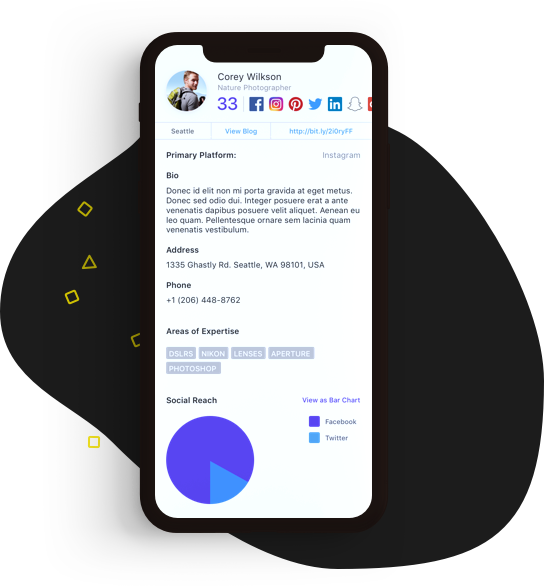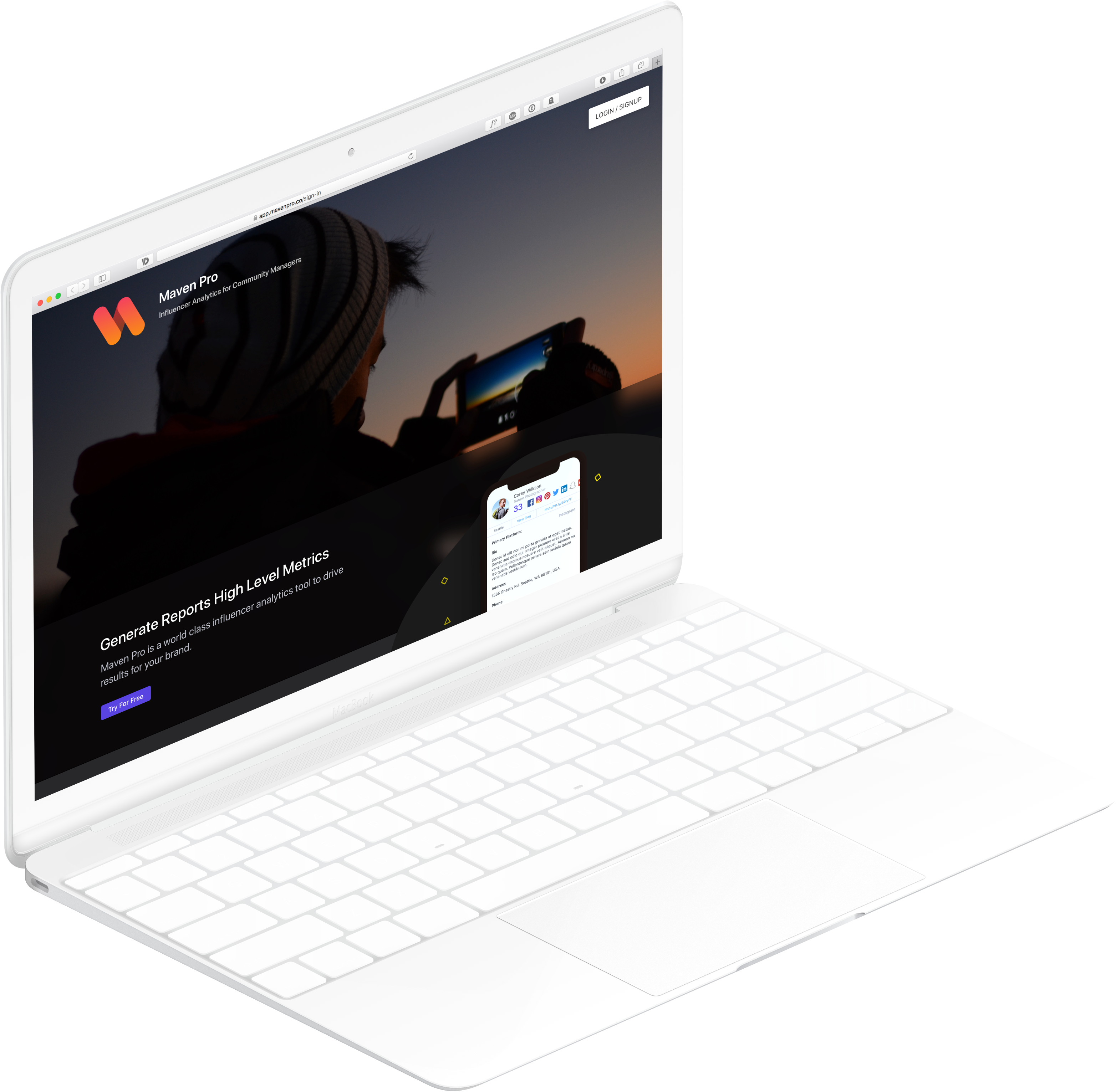Maven Pro
Product Design, Art Direction, Agile Coaching
Maven Pro is an influencer analytics product for reporting social and influencer campaigns. They provide a product that provides deep data on influencers. Influencers can provide audience and campaign reports that can tie to the effectiveness of a campaign down to ROI.

Maven approached me with plans of doing a complete rethink and design of the platform. However, I didn’t just request specs and start designing UI. I asked a ton of questions—hard ones. Questions that put every assumption on it’s head.
Discovery
I sat down with the CEO (Product Owner) and Maven’s lead developer. We found a nice café on Spadina and kicked things off.
There wasn’t a product roadmap or backlog to start with. I began with incorporating Lean UX principles along with User Story Mapping to create the spine of the user journey and initial MVP release. We discussed everything from target users and personas to implementation details of the software. Before creating our initial backlog we needed to come up with our shared value statement. This is usually a concise and direct sentence outlining what we are setting out to accomplish with this engagement. For the next couple of hours we worked on our initial backlog.
Ideally, in this part of the process we would conduct user interviews, research, and create user personas. This not only sets the basis for any tests, but continued work when the sprint kicks off. This reduced assumptions we were making out of the gate. The first thing we did is contact potential customers or existing users who fit our target and interview them on what problems they are looking to solve.
I’m personally a huge fan of GV Design Sprints and would suggest that any project kickoffs in this way.1 However in this case my involvement was limited so we skipped this part of my ideal process.
Sprint Kickoff
Now that we’ve kicked off development and design, the project team got straight to work. The developers started to work on the API, and I started to wireframe the initial mockups with the Product Owner.
I find the best way to wireframe is with a tool that forces you to keep the fidelity low. For example, I would sketch out a story or flow on a whiteboard and upload pictures of it to the related story. This is a cheap and effective way to visualize your thoughts. It also allows your team to share an understanding of what they will be building. If there’s a serious concern from the developers this conversation would happen before any further work is done. It’s common for these early stage mockups to change rapidly until we decide on what core experience fits best.
A brilliant side effect of having the core design process on a whiteboard, is that it makes the barrier to entry very low. I’ve found anecdotally that developers I worked with had a lot of opinions and suggestions of how the user interface could shape and form. However if the barrier to entry is understanding Sketch, it’s difficult to foster collaboration. I’ve found involving everyone as early as possible, leads to some of the most successful features I have ever shipped. Some of these have come from Customer Support Representatives and QA Testers.

At this point, I would review the sketches with key stakeholders. The Product Owner and I then reviewed the sketches. If there was an issue we’d come up with a better solution. This is an important part of the process because any time we make a decision, it’s based on our shared product value statement. This is the great equalizer because if we are not certain about something, comparing it to our true north always has a way of bringing clarity to that decision.
Delivery
Once we completed our initial iterations of sketches, we move onto the high fidelity mockups. How much time we spend on this stage really depends on the project. I find that depending on the project, client, and different variables, the less time I spend doing hi-fi mocks, the better.
Working through the backlog I designed the stories and addressed any additional feedback that came from the Product Owner or Lead Developer. The user interface was designed to be modern and vibrant inspired by the influencers and campaign managers the application was designed for.
A prominent part of this project was creating an analytics platform, as well as a central home for influencers to manage their campaigns with their sponsors. The final result was something I think is better described by visuals.

Outcomes
After the initial MVP was designed and the supplied to the developers, my involvement tapered off. The remaining work included some small modifications that I would work with the team on. Overall the client was really happy about the success of the engagement. The team loved the process we defined and wanted to continue to use it after my involvement ended. I think this process speaks to the ease and comfort this creates for Developers and Product Managers alike. It’s an adaptable and simple process for small and large projects. It brings the team together, and more importantly increases communication. When communication is better across the team this increases the likelihood of success.
“Matt has led the team at Maven through a process to help establish product direction, messaging and key design elements. Once the process was established he then executed on some of the best design concepts we have seen. He created a responsive web component library that could also be translated to iOS and Android. Matt was prompt, efficient and delivered on the deadlines required and communicated effectively through the process. Five stars for the work effort and design.”— Tim Mischuk, CEO & Founder
Footnotes
- If you haven’t heard of “The Design Sprint”, by GV, I really suggest checking it out. From the minute I first heard about this concept of reducing the time between the ‘Idea’ and ‘Learn’ phases I felt like this was the most brilliant design hack and was instantly 😍 with it.